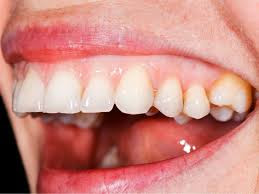What Is Chronic Gingivitis? What Are Various Chronic Gingivostomatitis Treatment Available Today?
Gingivitis is a very common periodontal condition that can occur in dogs. It is characterized by red lesions that form around the dog's mouth. This can occur on the tongue, inside the mouth, or on the rear of the tongue. In mild cases, it clears up on its own after a few days. However, if it is left untreated, it can lead to serious health problems. The most common symptoms of Chronic Gingivostomatitis are extreme itchiness, persistent redness and swelling, and a painful sore throat.
Gingivitis
is more common in dogs than it is in cats. Early treatment for this disease
will ensure long-term protection against it. Antibiotics or steroids are common
chronic gingivostomatitis treatments available today in the market.
Although
methods for chronic gingivostomatitis treatment for dogs are the same as those
used for humans, they are usually done differently. The primary difference is
in the methods used for removing and treating oral bacteria. In dogs, the main
source of infection is bacteria on the rear of the tongue. Since the tongue is
constantly in contact with the air, an ideal environment for bacteria to grow
is found there. Continuous brushing and cleaning will remove the bacteria from
the oral cavity, but it takes time.
Dogs
can also contract chronic gingivostomatitis when the affected area becomes
inflamed due to gum infections, receding gums, or trauma. If the area around
the mouth becomes severely painful, it could be a sign of severe gum disease or
cancer. To treat this condition effectively, it is important to address all of
its causes. Unfortunately, even with careful cleaning and prevention
treatments, sometimes gingivostomatitis can recur. The recurrence of
gingivostomatitis may be due to different factors such as improper diet,
genetic predisposition, or a dog's age


Comments
Post a Comment